Perfect fake ID benefits
Unlocking the Perks of a Perfect Fake ID: The Ultimate Guide to Benefits, Features, and Market Trends
Fake IDs have long held a contentious yet fascinating place in society. Whether used for bypassing age restrictions, enjoying earlier access to entertainment, or navigating identity-related complexities, they’ve become essential tools for many. While their legal and ethical implications have been discussed at length, this guide dives deep into the positive aspects, focusing on the potential benefits, features, market analysis, and the target audience for a perfect fake ID. This comprehensive guide is meant to provide you with a better understanding of why individuals seek fake IDs, what makes a perfect one, and how the market surrounding these products has evolved.
1. Understanding the Concept of a "Perfect" Fake ID
Before diving into the benefits of owning a fake ID, it’s essential to define what constitutes a "perfect" fake ID. A perfect fake ID isn’t just any random fake identification. It is meticulously designed, featuring state-of-the-art printing techniques, authentic holograms, and specific details that make it almost indistinguishable from a real ID.
Features of a Perfect Fake ID:
- Holograms and UV Features: High-quality fake IDs include holograms that can be seen under ultraviolet light, which are a hallmark of real identification cards.
- Exact Replication of Fonts and Colors: Fonts, colors, and layouts must mimic the real document precisely.
- Durable Material: A perfect fake ID uses the same materials (such as PVC or polycarbonate) as official IDs, ensuring longevity and resistance to wear and tear.
- Barcodes and Magnetic Strips: For tech-savvy security systems, fake IDs must replicate scannable barcodes or magnetic strips that pass data authentication.
- Security Features: Microprinting, special ink usage, or raised text to mimic advanced security features embedded in official documents.
2. Benefits of Owning a Perfect Fake ID
1. Access to Restricted Venues
The most common reason for obtaining a fake ID is to bypass age restrictions at bars, clubs, concerts, or other venues. For many young adults, being able to attend these places with friends creates a sense of social inclusion, especially in countries where the legal drinking age or entry requirements are set higher than the actual age of many college students.
Key Advantages:
- Early access to nightclubs, pubs, and music festivals.
- Increased opportunities for social interaction with peers.
- Access to exclusive parties or events that may have age restrictions.
2. Travel Convenience
In some instances, a perfect fake ID can help with travel arrangements where an alternative identity might simplify logistics. Some regions may allow entry with an identity card from neighboring countries, and having a fake ID can make cross-border travel more convenient.
Key Advantages:
- Use in regions where alternative identification is needed for domestic travel.
- Bypass potential roadblocks when official documentation isn't available.
- Smooth access to public transportation systems and travel discounts.
3. Educational and Employment Benefits
Some students or employees use fake IDs to gain access to certain academic or professional environments. This could involve registering for courses or workshops where age or nationality restrictions apply or securing internships where legal work permits may be difficult to obtain.
Key Advantages:
- Enrollment in specialized educational programs.
- Participation in internship or volunteer opportunities.
- Use of student discounts and educational resources at certain institutions.
4. Enhanced Privacy and Anonymity
In a world increasingly concerned with data privacy, having a fake ID can offer individuals enhanced anonymity. Whether navigating online transactions, attending certain events, or participating in activities where you'd prefer not to reveal your real identity, a fake ID offers a buffer of protection.
Key Advantages:
- Protection from potential identity theft.
- Avoiding data tracking by private entities.
- Greater control over personal data in various public and private scenarios.
5. Flexible Social Interactions
In many cases, people prefer to keep certain details of their lives private. A fake ID can allow for flexible social interaction, where individuals can curate their identity as they see fit, especially in unfamiliar environments. This can be useful in dating scenarios or meeting new social groups where someone wants to present themselves differently than in their everyday life.
Key Advantages:
- The ability to present an alternative persona.
- Avoid unwanted attention or curiosity about personal information.
- Greater freedom in creating new social connections.
3. The Market for Perfect Fake IDs: A Deep Dive
Fake IDs have a broad and diverse market that stretches across multiple demographics and geographies. While traditionally associated with underage individuals trying to access alcohol or nightclubs, the market has expanded into various niches, from online privacy enthusiasts to digital nomads seeking alternative documentation for flexibility in international travel.
Market Growth and Trends
In recent years, the fake ID market has seen steady growth, driven by both technological advancements in printing techniques and increased demand for anonymity in online and offline environments.
Key Market Trends:
- Technological Advancements: The ability to produce high-quality fake IDs has been propelled by advanced printing technologies. With 3D printing, laser engraving, and highly specialized equipment, the quality of modern fake IDs has improved exponentially.
- Online Platforms: The growth of dark web markets and niche online platforms has facilitated easier access to fake ID production. Anonymity in purchasing and fast global shipping options have broadened the market to new consumers.
- Shifting Use Cases: As data privacy becomes more critical, a rising number of individuals are purchasing fake IDs for reasons beyond age restriction circumvention. Many people now seek them for privacy, international travel, or alternative identity use in specific online communities.
Geographical Markets
Certain regions see higher demand for fake IDs due to stricter identification laws, younger populations, or sociocultural norms that make it difficult for individuals to access certain goods or services without being of a specific age.
Key Markets:
- United States: Driven by the legal drinking age of 21, many students and young adults seek fake IDs to access bars, nightclubs, and alcohol.
- European Union: Due to varying legal drinking ages across EU countries, individuals often seek fake IDs to cross borders with an alternative identity.
- Asia: Countries like South Korea and Japan have strict identification rules, pushing students and young adults to use fake IDs for nightlife and gaming purposes.
4. Target Audience for Perfect Fake IDs
Understanding the target demographic is key to identifying the primary consumers of fake IDs. Different people have different motivations, and their use of fake identification often aligns with their goals.
1. College Students
The largest market for fake IDs is undoubtedly college students. In countries where the legal drinking age is higher than the age of most college-goers, these individuals often seek IDs to engage in nightlife, attend concerts, or partake in events that require legal proof of age.
Target Demographics:
- Age: 17-20 years old
- Location: Primarily in countries like the United States, where drinking ages are strictly enforced.
- Motivations: Access to bars, clubs, social events, and alcohol.
2. Privacy Enthusiasts
With the rise of digital privacy concerns, a growing segment of consumers is using fake IDs as a means of protecting their identities online and offline. These individuals use fake IDs to navigate online platforms without sharing personal information and to prevent identity theft.
Target Demographics:
- Age: 25-40 years old
- Location: Global, with a focus on tech-savvy urban populations.
- Motivations: Protection of personal data, anonymous transactions, and online security.
3. International Travelers
For individuals traveling between countries with strict border control policies, a fake ID can offer flexibility. Digital nomads, in particular, find fake IDs helpful in maintaining multiple personas to access different services across various countries.
Target Demographics:
- Age: 22-35 years old
- Location: Global, particularly digital nomads and frequent travelers.
- Motivations: Convenience in accessing international travel services, border crossings, and public transportation.
5. Risks and Ethical Considerations
While this article focuses on the positive aspects of owning a perfect fake ID, it’s crucial to acknowledge the potential risks and ethical concerns that come with using them.
Legal Implications
The use of fake IDs is illegal in most jurisdictions, carrying significant penalties ranging from fines to jail time. Getting caught using one can also lead to a permanent mark on one’s record, affecting future employment and educational opportunities.
Security Concerns
Fake IDs can be used for malicious purposes, such as identity theft or fraud. If a fake ID falls into the wrong hands, it can lead to misuse, which is why consumers should be cautious of their purchases and avoid involvement in illegal activities.
Conclusion
While the concept of a "perfect fake ID" may seem alluring due to its many benefits—ranging from access to restricted areas to enhanced privacy—it’s essential to weigh the potential legal and ethical risks. The market for fake IDs continues to evolve, driven by technological advancements and growing consumer demand. Whether for social, educational, or privacy-related purposes, a perfect fake ID offers numerous advantages for specific target audiences. However, individuals should always be aware of the potential consequences of using such a product and consider both its advantages and the responsibilities it brings.
 Utah driver's license
Utah driver's license
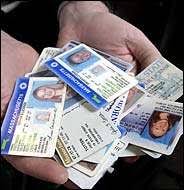 customized fake IDs
customized fake IDs
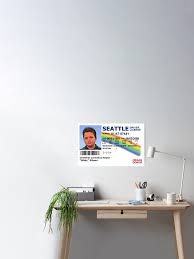 target audience for fake IDs
target audience for fake IDs
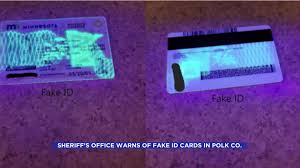 counterfeit identification
counterfeit identification
 fake ID laws
fake ID laws
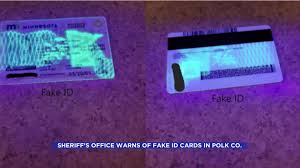 Fake University Cards
Fake University Cards
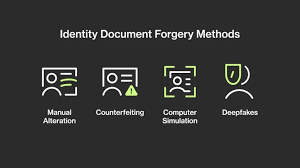 ISS number on a fake ID
ISS number on a fake ID
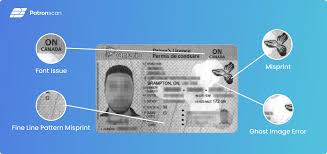 Fake ID market analysis
Fake ID market analysis
